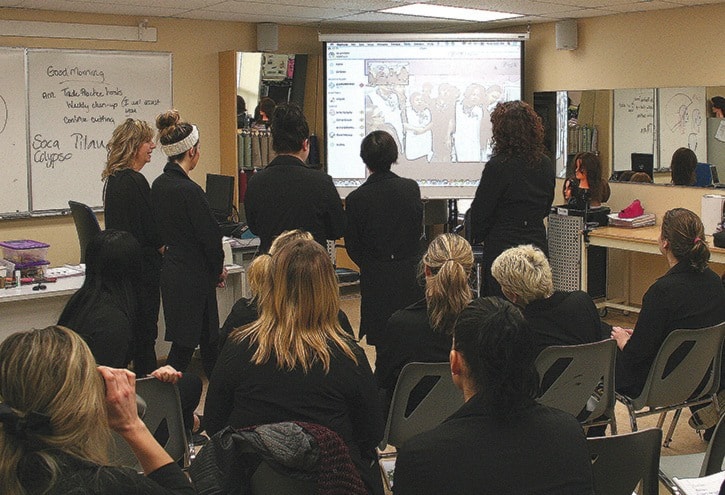By Dane Gibson
There they were on the big screen, live from Trinidad, smiling and waving at the Vancouver Island University hairdressing students who excitedly waved back from their Nanaimo classroom.
The Trinidadians on the wall-mounted video screen were hairdressing students from Youth Training and Employment Partnership Program Limited, a Trinidad and Tobago training organization. More than a dozen eager faces crowded around the camera in their Trinidad classroom to meet their counterparts at VIU for the first time via Skype. After a few introductions, the questions from the VIU students came fast and furious.
“What kind of music do you listen to? How many months is your hairdressing program? Do you have a Sephora (makeup, beauty and skincare store) in Trinidad?”
VIU and YTEPP are engaged in a three-year learning and training partnership that runs until April 2017.
Sally Vinden, chairwoman of VIU’s hairdressing program, was there to moderate the online skill-sharing session along with her YTEPP counterparts in Trinidad.
“Through this partnership, our teams have visited each other’s countries to share best practices, lesson plans and technical program information. Through that process we’ve gotten to know each other pretty well,” said Vinden. “But this is the first time we’ve been able to get our students together in a way that allows them to interact freely, talk about their home countries and share the challenges they experience as students.”
Once the questions were over, a student from Trinidad demonstrated a popular hairstyle from her country on a mannequin with long black hair.
“It takes more skill than a typical braid because you have to take each strand and twist them in opposite directions before you bring them together,” she demonstrated. “It becomes a twist over a twist. It’s more complex and tighter than a braid and it offers more freedom.”
The students at VIU hadn’t seen this unique approach. When they asked about it they were told it was a ‘Bengalese twist.’ The session went on with both sides sharing tips, tricks and a lot of laughter.
Dane Gibson is a writer with VIU’s communications department.
